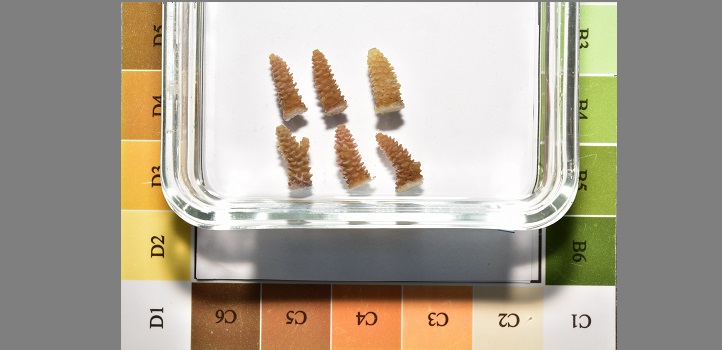


18 August, 2020

A safer technique reveals that corals take up seawater pollutants both directly and indirectly.
Marine pollutants are taken up by corals directly from seawater as well as through accumulation in their food, shows research from KAUST that uses a state-of-the-art spectroscopy technique known as cavity ring-down spectroscopy. This is the first time the approach has been used to measure pollutant accumulation.
A hydrocarbon pollutant, phenanthrene, was monitored to see how it accumulates in coral tissue by a team formed by members from Agusti's and Duarte's labs at the Red Sea Research Center, collaborating with researchers at the Australian Institute of Marine Science (AIMS). Coral colonies were grown at the AIMS National Sea Simulator for a fortnight before being exposed to phenanthrene, which is often used as a model for oil pollution.
The researchers introduced phenanthrene through two routes. They fed it to microalgae that were then ingested by the corals, and they also exposed corals to phenanthrene directly in seawater. To track the uptake and accumulation of phenanthrene, they labeled it with a nonradioactive heavy isotope of carbon (13C). Then they used the spectroscopy technique to measure the amount of 13C in the coral tissues over the course of six days.
The analysis showed that the corals accumulate similar total amounts of phenanthrene, whether via diffusion from the seawater or through uptake in their food. However, the rate of uptake was faster via seawater exposure than from feeding. Ananya Ashok, the lead author of the study, explains that this finding was counterintuitive and points out that uptake is only part of the picture. “It’s not a one-way process. There’s a dynamic process of accumulation and elimination constantly happening. It’s possible that phenanthrene is being retained more from the diet even though it’s taken up at a slower rate,” she says.
Understanding the full dynamics of this process is ongoing. The team has experiments planned to investigate pollutant  excretion by corals as well as the role of other players, such
as copepods, in the food web. “It’s important to consider more than one route of accumulation when doing assessments and setting thresholds for these chemicals in natural environments where corals live,” says Ashok. “All of
the different pathways and dynamics help to develop a more integrated regulatory picture.”
excretion by corals as well as the role of other players, such
as copepods, in the food web. “It’s important to consider more than one route of accumulation when doing assessments and setting thresholds for these chemicals in natural environments where corals live,” says Ashok. “All of
the different pathways and dynamics help to develop a more integrated regulatory picture.”
The new technique has significant advantages, Agusti explains. “It is an alternative to the use of radioactive isotopes, traditionally used to trace compounds in organisms and food webs.” Radioactive isotopes are potentially harmful to the environment. Also, their toxicity makes it challenging to correctly estimate how well marine organisms tolerate pollution. The new technique resolved these risks and makes it possible to run experiments for weeks instead of just hours.